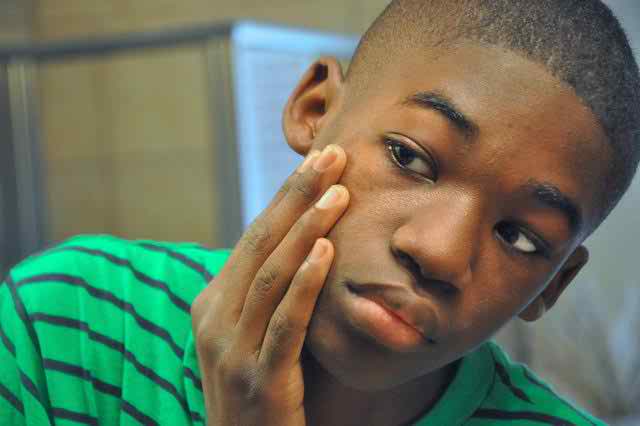Skin Care Tips for dark skinned Men
The
amount of pigment/ dyer called melanin your body generates determines
your skin color and how you should care for your skin. Skin care for
dark skinned men invirons the usual daily care refered for everyone, but
some additional ways/measures need to be taken that utter to the
characteristics of dark skin and hair.
Skin Care Tips for dark skinned men :
As for everyone daily skin
care for dark skinned men includes cleansing and moisturizing. Severe
soaps and frequent apply of hot water for long baths and showers can
carry away too much oil from your skin. Bath in lukewarm water, limit
bathing time to 15 minutes once a day and use a mild soap to escape dry,
flaky skin. The American Osteopathic College of Dermatology advises
that if you had to use deodorant soap and you have dry skin, use the
deodorant soap on your underarms, feet and genital area and use a milder
soap on the rest of your body. Pat your skin anhydrous/dry after
bathing so moisture stays on your skin, and apply moisturizer while your
skin is dank to retain the moisture.
Skin Protection :
While dark-skinned people are less probably to
develop skin cancer than lighter-skinned ones, they have a
disproportionately high fatality rate from skin cancer because of late
tackle. The melanin in African American skin gives you with a sun
protection factor, or SPF, of about 13.4; however, the Skin Cancer Base
recommends that everyone follow the same rudders for sun protection.
Apply 1 ounce of sun protection factor or SPF 15 sunscreen every day
over your whole body at least 30 minutes earlier you go outside, and
reapply the sunscreen in every two hours, especially to your neck and
the open-eyed skin on your head. Review your skin minimum once in a
month for moles, discoloration and spots, paying particular care to your
feet, hands and fingernails.
Avoid Razor Bumps :
Pseudofolliculitis barbae, or razor bumps,
invades about 60 percent of dark skinned men, according to the American
Osteopathic College of Dermatology. Razor bumps occur while close
shaving of tightly wrinkled facial hair results in ingrown hairs. The
ingrown hairs effect unsightly and often painful razor bumps, which can
effect inflammation and scarring. Avoid razor bumps by serving less
often, serving in the direction your hair grows, using a cutter for a
less close serve or using special razors designed to check razor bumps.
Treat existing razor friction/bumps by avoiding serving for about four
weeks and using a instructed cortisone cream on the affected areas of
your face.
Prevent Acne Keloidalis Nuchae :
Acne keloidalis nujchae, or AKN,
means to razor bumps that appear on the back of the neck. According to
the American Osteopathic College of Dermatology, AKN is likely caused by
close serving and ingrown hairs, just like razor bumps on the face.
Close serving on the backside of the neck often causes furrow and cuts
that subscribe to the problem. Fading, a style of tonsure/haircut, also
causes AKN. Avoid close cuts that hound the skin and cause ingrown
hairs. Treat AKN with relevant retinoids or antibiotics. Cortisone
injections can assist with keloids.
Tips :
Moisturize daily, but forgo moisturizers that include
dyes, fragrances and lanolin if you have sensitive skin. Darker skin can
be impressionable to perfumes and chemicals. Ask your doctor on
moisturizers if your skin is oily.
